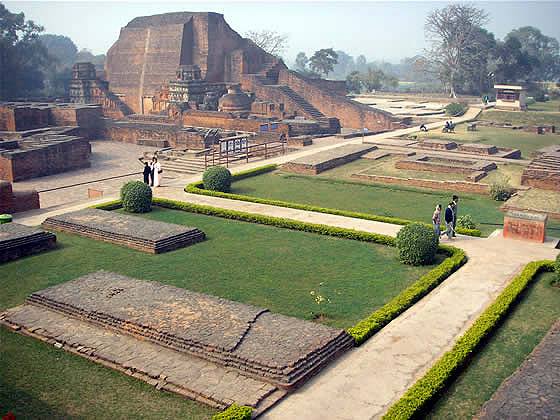|
Eight Auspicious Symbols
The Ashtamangala () is the sacred set of Eight Auspicious Signs ( zh, 八吉祥, ''bajixiang'') featured in a number of Indian religions such as Hinduism, Jainism, and Buddhism. The symbols or "symbolic attributes" () are yidam and teaching tools. Not only do these attributes (or energetic signatures) point to qualities of enlightened mindstream, but they are the investiture that ornaments these enlightened "qualities" (Sanskrit: ''guṇa''; ). Many cultural enumerations and variations of the Ashtamangala are extant. Buddhism Tibetan Buddhists make use of a particular set of eight auspicious symbols, ''ashtamangala'', in household and public art. Some common interpretations are given along with each symbol although different teachers may give different interpretations: Conch The right-turning white conch shell (Sanskrit: ; ) represents the beautiful, deep, melodious, interpenetrating and pervasive sound of the dharma, which awakens disciples from the deep slumber of ig ... [...More Info...] [...Related Items...] OR: [Wikipedia] [Google] [Baidu] |
Conch
Conch ( , , ) is a common name of a number of different medium-to-large-sized sea snails. Conch shells typically have a high Spire (mollusc), spire and a noticeable siphonal canal (in other words, the shell comes to a noticeable point on both ends). Conchs that are sometimes referred to as "true conchs" are Marine (ocean), marine gastropods in the family (biology), family Strombidae, specifically in the genus ''Strombus'' and other closely related genera. For example, ''Aliger gigas'', the queen conch, is a true conch. True conchs are identified by their long spire. Many other species are also often called "conch", but are not at all closely related to the family Strombidae, including ''Melongena'' species (family Melongenidae) and the horse conch ''Triplofusus papillosus'' (family Fasciolariidae). Species commonly referred to as conches also include the sacred chank or ''shankha'' shell (''Turbinella pyrum'') and other ''Turbinella'' species in the family Turbinellidae. The ... [...More Info...] [...Related Items...] OR: [Wikipedia] [Google] [Baidu] |
Shrivatsa
The Shrivatsa (Sanskrit: ; IAST: ''Śrīvatsa,'' ) is an ancient symbol, considered auspicious in Hinduism and other Indian religious traditions. Hinduism Origin Shrivatsa means "Beloved of Shri", an epithet of Vishnu, and a reference to his consort, the goddess Lakshmi, also called Shri. It is a mark on the chest of Vishnu, where his consort is described to reside. The Bhagavata Purana explains the origin of this mark. The story goes that a number of maharishis once gathered on the banks of the river Sarasvati to perform a yajna. A dispute arose among these sages regarding the superiority of the members of the Trimurti: Brahma, Vishnu, or Shiva. The sage Bhrigu was appointed to discover the truth of this matter, and undertook this task by travelling to the abodes of these deities. He felt disrespected by Brahma when the latter was offended by the fact that he had taken his seat on a stool that was not offered to him. He grew anxious when Shiva rose to embrace him, wh ... [...More Info...] [...Related Items...] OR: [Wikipedia] [Google] [Baidu] |
Vishnu
Vishnu (; , , ), also known as Narayana and Hari, is one of the Hindu deities, principal deities of Hinduism. He is the supreme being within Vaishnavism, one of the major traditions within contemporary Hinduism, and the god of preservation (sattva). Vishnu is known as ''The Preserver'' within the Trimurti, the triple deity of Para Brahman, supreme divinity that includes Brahma and Shiva.Gavin Flood, An Introduction to Hinduism' () (1996), p. 17. In Vaishnavism, Vishnu is the supreme Lord who creates, protects, and transforms the Hindu cosmology, universe. Tridevi is stated to be the energy and creative power (Shakti) of each, with Lakshmi being the equal complementary partner of Vishnu. He is one of the five equivalent deities in Panchayatana puja of the Smarta tradition of Hinduism. According to Vaishnavism, the supreme being is with qualities (Saguna Brahman, Saguna), and has definite form, but is limitless, transcendent and unchanging absolute Brahman, and the primal Atma ... [...More Info...] [...Related Items...] OR: [Wikipedia] [Google] [Baidu] |
Buddhist Philosophy
Buddhist philosophy is the ancient Indian Indian philosophy, philosophical system that developed within the religio-philosophical tradition of Buddhism. It comprises all the Philosophy, philosophical investigations and Buddhist logico-epistemology, systems of rational inquiry that developed among various schools of Buddhism in ancient India following the ''Parinirvana, parinirvāṇa'' of Gautama Buddha (c. 5th century BCE), as well as the further developments which followed the Silk Road transmission of Buddhism, spread of Buddhism throughout Asia. Buddhism combines both philosophical reasoning and the Buddhist meditation, practice of meditation.Siderits, Mark. Buddhism as philosophy, 2007, p. 6 The Buddhist religion presents a multitude of Buddhist paths to liberation; with the expansion of early Buddhism from ancient India to Sri Lanka and subsequently to East Asia and Southeast Asia, Buddhist thinkers have covered topics as varied as cosmology, ethics, epistemology, logic ... [...More Info...] [...Related Items...] OR: [Wikipedia] [Google] [Baidu] |
Namkha
The namkha (Tibetan: ''nam mkha'' (ནམ་མཁའ་), 'sky', ' space', ' aether', ' heaven'), also known as ''Dö'' (Tibetan: ''mdos'' (མདོས)),) is a form of yarn or thread cross composed traditionally of wool or silk and is a form of the endless knot of the ''Eight Auspicious Symbols ( Ashtamangala)''. The structure is made of coloured threads wrapped around wooden sticks. Used in the rituals of Bön—the pre-Buddhist religion of Tibet—in reality this object represents the fundamental components and aspects of the energy of the individual, as defined from the conception until the birth of the individual. History Knowledge about the use of namkha were almost completely lost, but in 1983 Chögyal Namkhai Norbu wrote a text entitled "The Preparation of Namkha which Harmonizes the Energy of the Elements", and in the same year gave oral teachings on namkha explaining that its function is to harmonize the elements of the individual and the various forms of energy ... [...More Info...] [...Related Items...] OR: [Wikipedia] [Google] [Baidu] |
Karuṇā
() is generally translated as compassion or mercy and sometimes as self-compassion or spiritual longing. It is a significant spiritual concept in the Indic religions of Hinduism, Buddhism, Sikhism, and Jainism. Hinduism In Hinduism, is one of the fundamental virtues and qualities that a spiritual aspirant is encouraged to cultivate. Many Hindu deities are depicted as embodiments of compassion. Karuṇā is often linked with other virtues such as "Maitri" (loving-kindness) and "Ahimsa" (non-violence). Together, these virtues form the foundation of a righteous and spiritually fulfilling life. The word comes from the Sanskrit kara, meaning “to do” or “to make,” indicating an action-based form of compassion, rather than the pity or sadness associated with the English word. In Hindu mythology, the concept of "Karuṇā" or compassionate action is deeply embedded and is often illustrated through stories, characters, and teachings. Each avatar's story of Hindu pantheon is ... [...More Info...] [...Related Items...] OR: [Wikipedia] [Google] [Baidu] |
Prajñā (Buddhism)
() or () is a Buddhist term often translated as "wisdom", "insight", "intelligence", or "understanding". It is described in Buddhist texts as the understanding of the true nature of phenomena. In the context of Buddhist meditation, it is the ability to understand the three characteristics of all things: ("impermanence"), ("dissatisfaction" or "suffering"), and ("non-self" or "egolessness"). Mahāyāna texts describe it as the understanding of ("emptiness"). It is part of the Threefold Training in Buddhism, and is one of the ten of Theravāda Buddhism and one of the six Mahāyāna . Etymology is often translated as "wisdom", but according to Buddhist bioethics scholar Damien Keown, it is closer in meaning to "insight", "non-discriminating knowledge", or "intuitive apprehension". The component parts of the word are: ; ''Pra'' () : an intensifier which can be translated as "higher", "greater", "supreme" or "premium", or "being born or springing up", referring to a spon ... [...More Info...] [...Related Items...] OR: [Wikipedia] [Google] [Baidu] |
Pratītyasamutpāda
''Pratītyasamutpāda'' (Sanskrit: प्रतीत्यसमुत्पाद, Pāli: ''paṭiccasamuppāda''), commonly translated as dependent origination, or dependent arising, is a key doctrine in Buddhism shared by all schools of Buddhism. It states that all dharmas (phenomena) arise in dependence upon other dharmas: "if this exists, that exists; if this ceases to exist, that also ceases to exist". The basic principle is that all things (dharmas, phenomena, principles) arise in dependence upon other things. The doctrine includes depictions of the arising of suffering (''anuloma-paṭiccasamuppāda'', "with the grain", forward conditionality) and depictions of how the chain can be reversed (''paṭiloma-paṭiccasamuppāda'', "against the grain", reverse conditionality).Fuller, Paul (2004). ''The Notion of Ditthi in Theravada Buddhism: The Point of View.'' p. 65. Routledge.Harvey, Peter. ''The Conditioned Co-arising of Mental and Bodily Processes within Life and Betw ... [...More Info...] [...Related Items...] OR: [Wikipedia] [Google] [Baidu] |
śūnyatā
''Śūnyatā'' ( ; ; ), translated most often as "emptiness", " vacuity", and sometimes "voidness", or "nothingness" is an Indian philosophical concept. In Buddhism, Jainism, Hinduism, and other Indian philosophical traditions, the concept has multiple meanings depending on its doctrinal context. It is either an ontological feature of reality, a meditative state, or a phenomenological analysis of experience. In Theravāda Buddhism, ' often refers to the non-self (Pāli: ', Sanskrit: ') nature of the five aggregates of experience and the six sense spheres. ' is also often used to refer to a meditative state or experience. In Mahāyāna Buddhism, ' refers to the tenet that "all things are empty of intrinsic existence and nature ('' svabhava'')", but may also refer to the Buddha-nature teachings and primordial or empty awareness, as in Dzogchen, Shentong, or Chan. Etymology ''Śūnyatā'' is usually translated as "devoidness", "emptiness", "hollow", "hollowness", "v ... [...More Info...] [...Related Items...] OR: [Wikipedia] [Google] [Baidu] |
Srivatsa
The Shrivatsa (Sanskrit: ; IAST: ''Śrīvatsa,'' ) is an ancient symbol, considered auspicious in Hinduism and other Indian religious traditions. Hinduism Origin Shrivatsa means "Beloved of Shri", an epithet of Vishnu, and a reference to his consort, the goddess Lakshmi, also called Shri. It is a mark on the chest of Vishnu, where his consort is described to reside. The Bhagavata Purana explains the origin of this mark. The story goes that a number of maharishis once gathered on the banks of the river Sarasvati to perform a yajna. A dispute arose among these sages regarding the superiority of the members of the Trimurti: Brahma, Vishnu, or Shiva. The sage Bhrigu was appointed to discover the truth of this matter, and undertook this task by travelling to the abodes of these deities. He felt disrespected by Brahma when the latter was offended by the fact that he had taken his seat on a stool that was not offered to him. He grew anxious when Shiva rose to embrace him, which ... [...More Info...] [...Related Items...] OR: [Wikipedia] [Google] [Baidu] |
Endless Knot
file:Endless knot detail, from- Burmese-Pali Manuscript. Wellcome L0026495 (cropped).jpg, Endless knot in a Burmese Pali manuscript The endless knot or eternal knot is a symbolic Knot (mathematics), knot and one of the Ashtamangala, Eight Auspicious Symbols. It is an important symbol in Hinduism, Jainism and Buddhism. It is an important cultural marker in places significantly influenced by Tibetan Buddhism such as Tibet, Mongolia, Tuva, Kalmykia, and Buryatia. It is also found in Celtic knot, Celtic, Kazakh culture, Kazakh and Chinese knotting, Chinese symbolism. History The endless knot appears on clay tablets from the Indus Valley civilization (2500 BC) and on a historic era inscription. While associated with Dharmic religions, it also appears in Islamic art. It likely was introduced due to trade and other cultural contact with China, the Mongols, and Iran. Interpretations Buddhism Various Buddhist interpretations of the symbol are: * The endless knot iconography sym ... [...More Info...] [...Related Items...] OR: [Wikipedia] [Google] [Baidu] |





